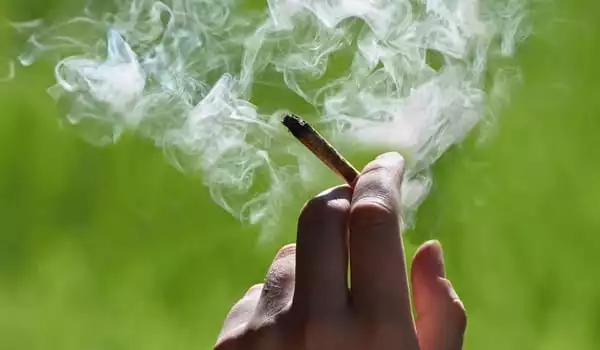According to a new study from the National Institute on Drug Abuse (NIDA), marijuana use is associated with an increased risk of suicidal ideation. According to the findings, which were published this week in JAMA Network Open, even people who used marijuana infrequently were more likely to be depressed than those who did not use marijuana at all. The study adds to the growing body of evidence pointing to a link between cannabis use and mood disorders and attempts at self-harm.
An examination of survey data from over 280,000 young adults aged 18 to 35 revealed that cannabis (marijuana) use was associated with an increased risk of suicidal ideation, a suicide plan, and suicide attempt. These associations persisted regardless of whether or not the person was also depressed, and the risks were higher for women than for men. The study was conducted by researchers at the National Institute on Drug Abuse (NIDA), which is part of the National Institutes of Health, and was published online today in JAMA Network Open.
According to research published in the journal JAMA Psychiatry on Tuesday by the National Institute on Drug Abuse (NIDA), the correlation persisted even when the teens and young adults did not experience — or at least did not report — any major depression. And, while this study does not prove conclusively that more marijuana leads to more suicidal thoughts or attempts — or vice versa — it does reveal an alarming trend that doctors and scientists should investigate further.
An alarming new study found that increased cannabis use seems to be linked — at least in some way — with an increased prevalence of suicidal thoughts and attempts among young adults.
“While we cannot prove that cannabis use caused the increased suicidality observed in this study,” senior study author and NIDA Director Nora Volkow said in a press release about the study. “As we gain a better understanding of the relationship between cannabis use, depression, and suicidality, clinicians will be able to provide better guidance and care to patients.”
The researchers looked at years of self-reported data from over 280,000 people between the ages of 18 and 35. According to CNN, among those who reported having a major depressive episode in the previous year, those who also reported near-daily cannabis use in some form were far more likely to have suicidal thoughts than those who didn’t smoke or smoked less frequently.
They also discovered that the risk was higher in women than in men, but the study authors told CNN that the way their study was designed prevented them from investigating why this was the case. Regardless, they hope that their research will assist doctors in better identifying and caring for at-risk patients.

“Suicide is a leading cause of death among young adults in the United States, and the findings of this study provide important information that may help us reduce this risk,” said lead study author and NIDA researcher Beth Han in a statement. “Both depression and cannabis use disorder are treatable conditions, and cannabis use can be altered.” We hope to offer new targets for prevention and intervention in individuals who we know are at high risk by better understanding the associations of different risk factors for suicidality.”
The study’s findings revealed that even people who used cannabis on a weekly basis, or less than 300 days per year, were more likely to have suicidal ideation and plan or attempt suicide than those who did not use the drug at all. These associations persisted regardless of whether or not the person was also depressed. Suicidal ideation was present in approximately 3% of those who did not use cannabis and did not have a major depressive episode, compared to approximately 7% of those who used cannabis nondaily, 9% of those who used cannabis daily, and 14% of those who had a cannabis use disorder.
Suicidal ideation was present in 35% of people with depression who did not use cannabis, compared to 44% of those who used cannabis nondaily, 53% of those who used cannabis daily, and 50% of those who had a cannabis use disorder. Similar patterns emerged for the associations between various levels of cannabis use and suicidal ideation or attempt.
Furthermore, the researchers discovered that women who used cannabis at any level were more likely than men to have suicidal ideation or report a suicide plan or attempt. For example, among individuals without a major depressive episode, the prevalence of suicidal ideation was 13.9 percent vs. 3.5 percent among women and 9.9 percent vs. 3.0 percent among men with vs. without a cannabis use disorder. Women had a 52 percent higher prevalence of past-year suicide plans (23.7 percent) than men among those who had both cannabis use disorder and a major depressive episode (15.6 percent).















